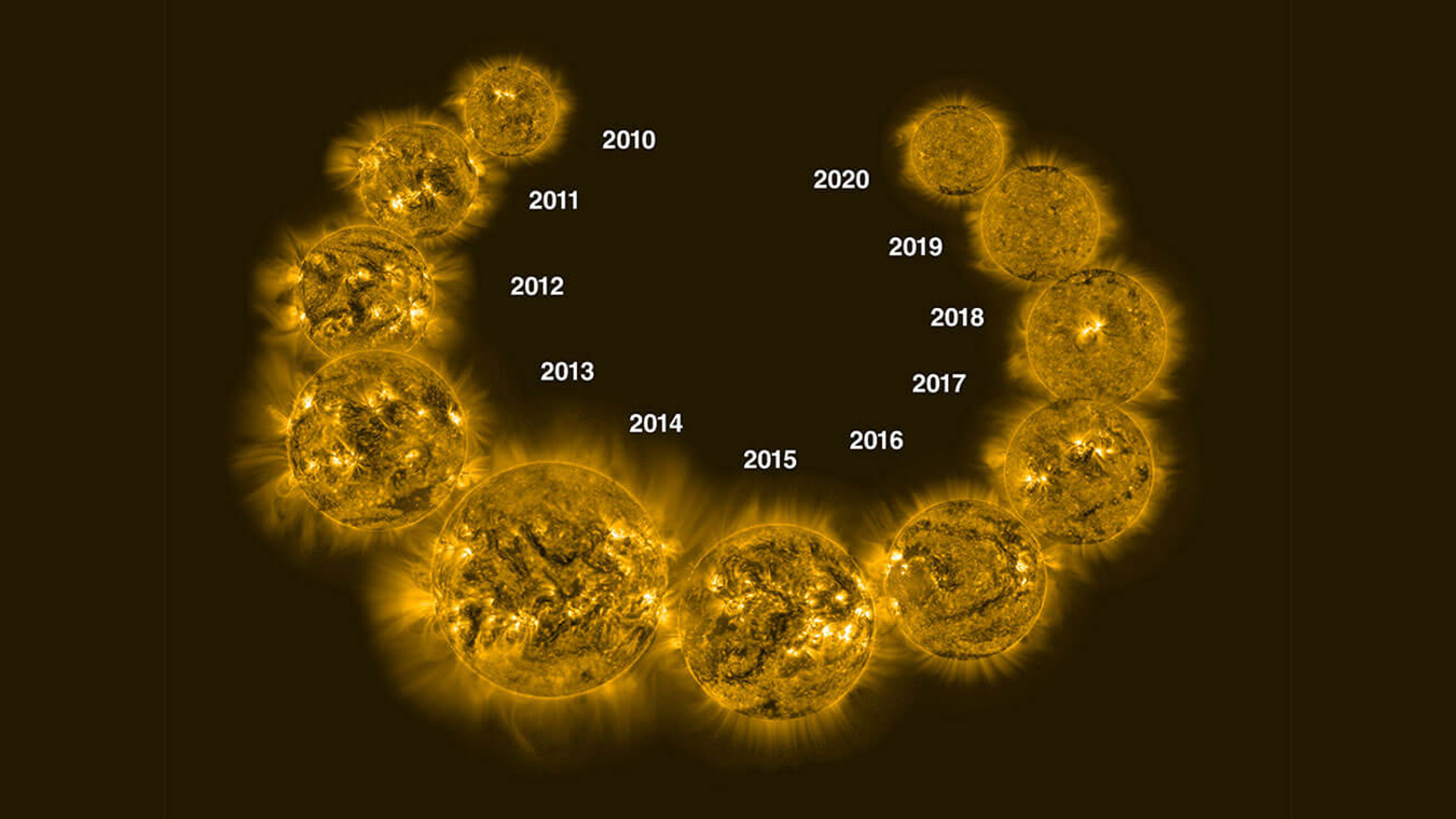Solar Cycle
What is a Solar Cycle?
- The Sun is a huge ball of electrically-charged hot gas. This charged gas moves, generating a powerful magnetic field.
- Every 11 years or so, the Sun’s magnetic field completely flips. This means that the Sun’s north and south poles switch places. Then it takes about another 11 years for the Sun’s north and south poles to flip back again.
- This recurring process, where the Sun’s magnetic field reverses, is known as the solar cycle.

What causes the Solar Cycle?
- The Sun goes through this cycle because its magnetic field is constantly stretching and twisting, caused by the movement of hot plasma inside the star.
Solar Cycle and Sunspot activity
- Sunspots are darker, cooler areas on the surface of the sun that arise due to disturbances in the sun’s magnetic field.
- The total number of sunspots varies during the 11-year solar cycle. The middle of the solar cycle is the solar maximum, or when the Sun has the most sunspots. As the cycle ends, it fades back to the solar minimum and then a new cycle begins.
Impacts of Solar Cycle
- Giant eruptions on the Sun, such as solar flares and coronal mass ejections (CMEs), increase during the solar cycle. These eruptions send powerful bursts of energy and material into space.
|
- This activity can have effects on Earth. For example, eruptions can cause aurora, or impact radio communications. Extreme eruptions can even affect electricity grids on Earth.
- Solar activity can affect satellite electronics and limit their lifetime.
Why in news?
- Three small Australian satellites disintegrated in Earth’s atmosphere due to heightened solar activity linked to the solar cycle. At its midpoint, the cycle reaches a peak in solar activity
Subscribe
Login
0 Comments
